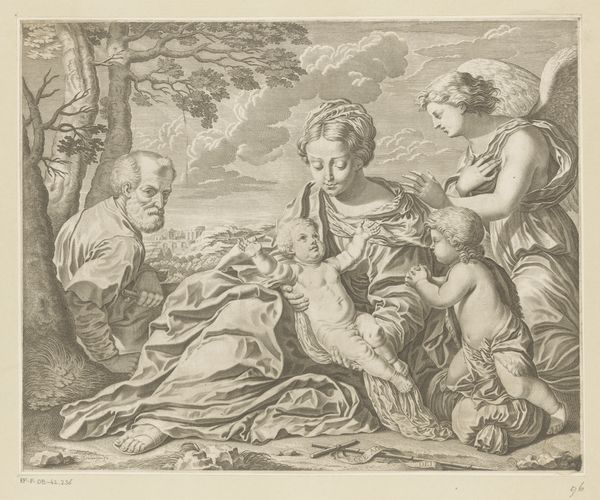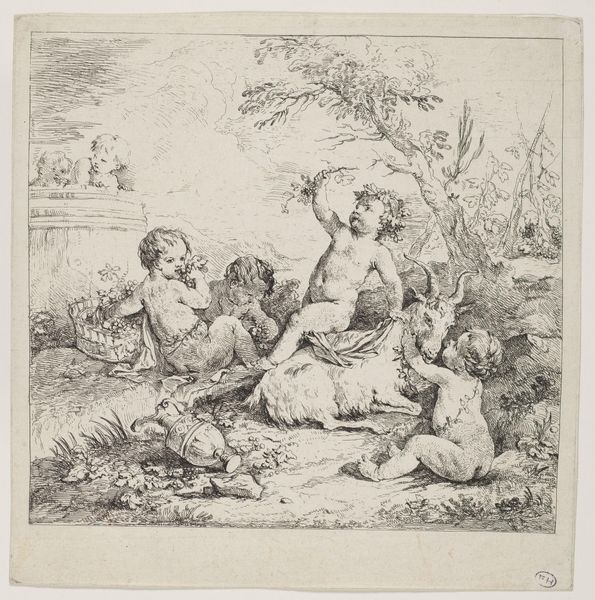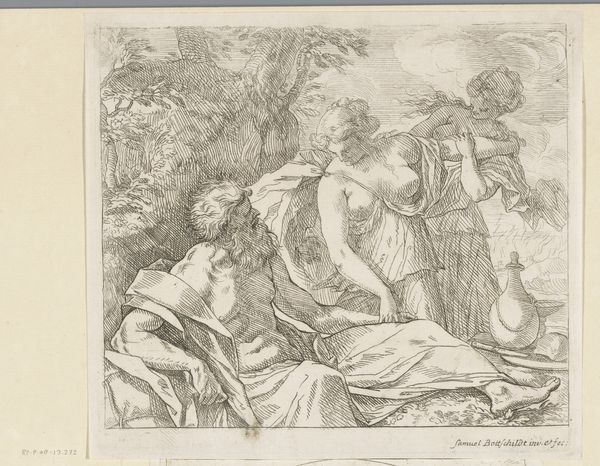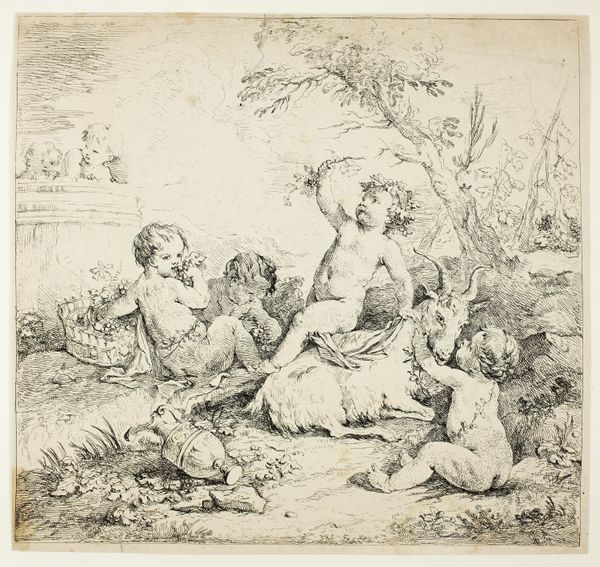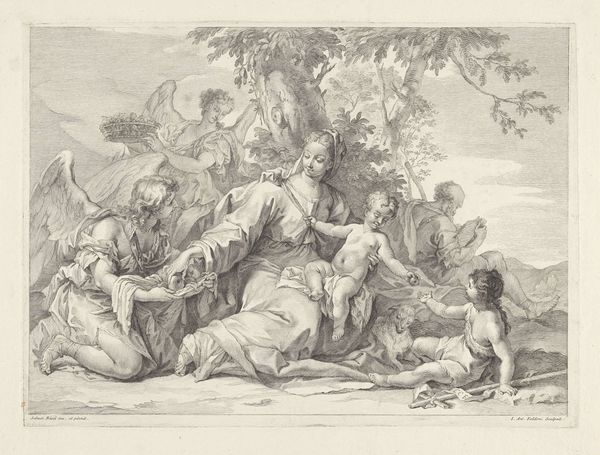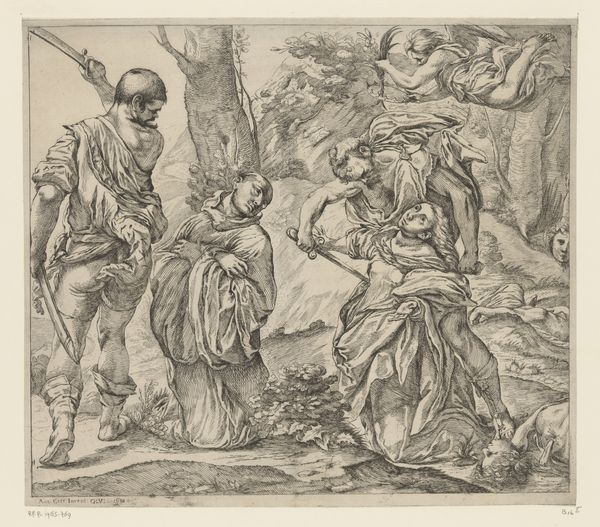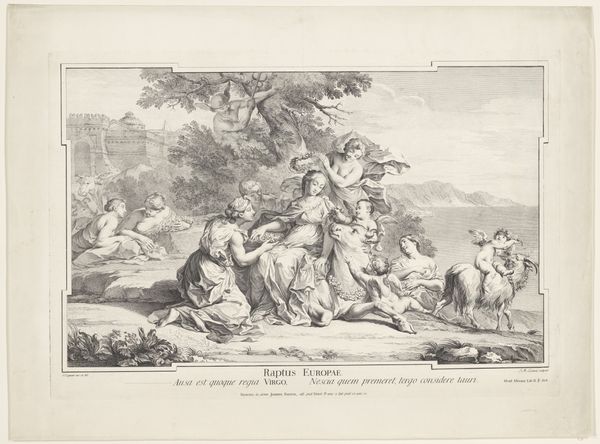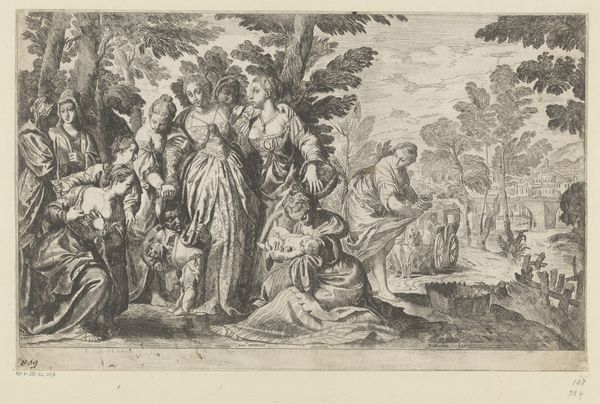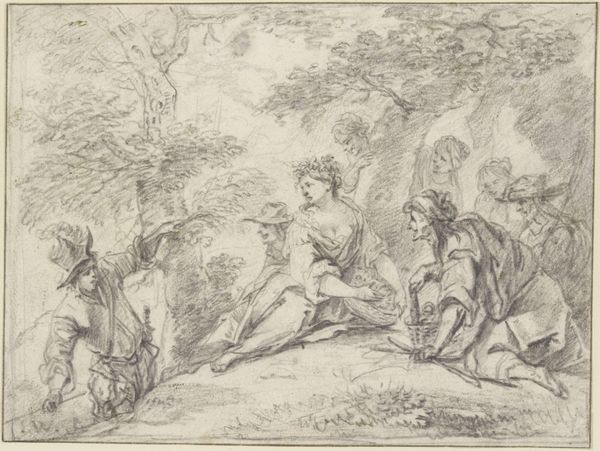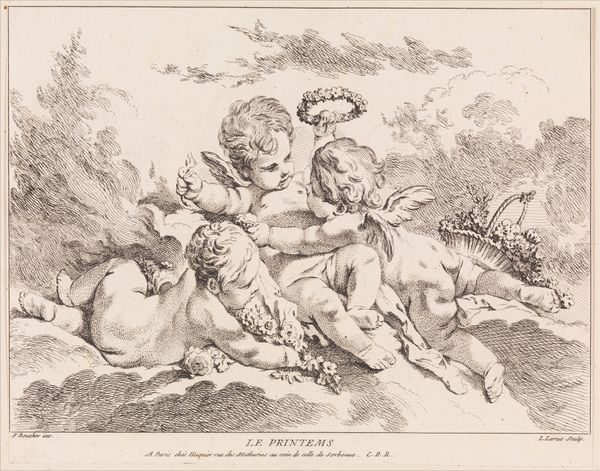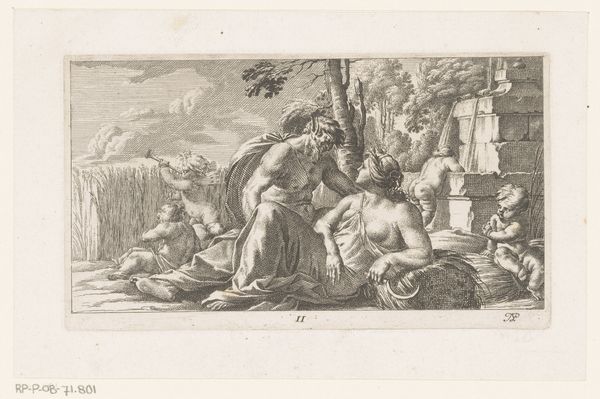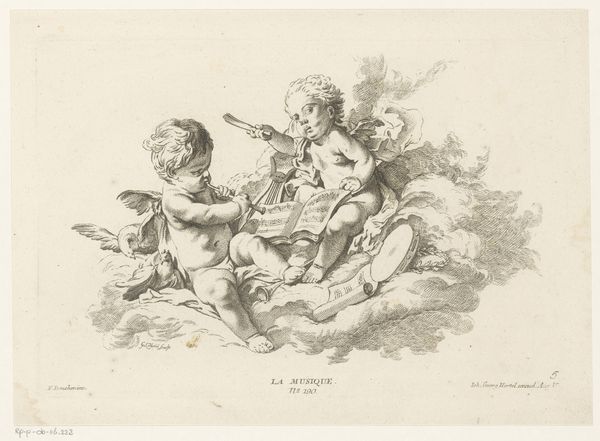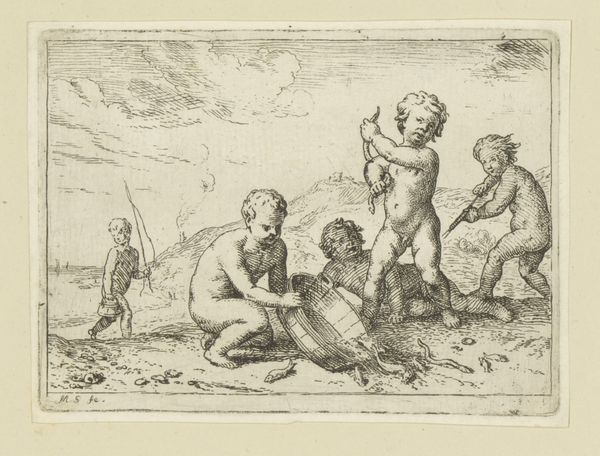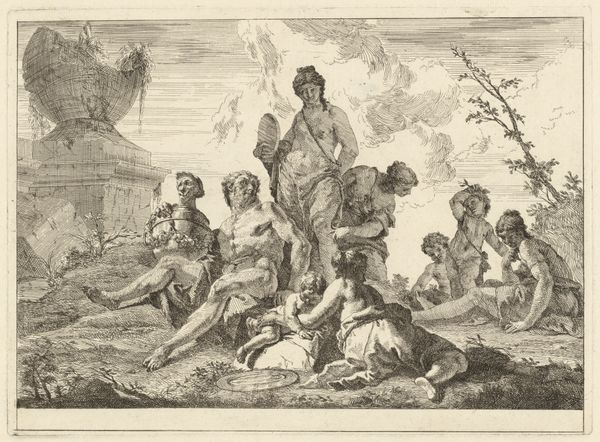
Bloemenplukkende vrouwen en een rustende man met twee kinderen 1734 - 1797
0:00
0:00
Dimensions: height 238 mm, width 375 mm
Copyright: Rijks Museum: Open Domain
Editor: This is "Bloemenplukkende vrouwen en een rustende man met twee kinderen," which translates to "Flower-picking women and a resting man with two children" by Jean-François Clermont. It's dated between 1734 and 1797 and it looks like it's rendered using engraving, etching, and ink. The figures seem to exist in an idyllic scene, but there’s an interesting mix of labor and leisure happening. What draws your eye when you look at this piece? Curator: The symbolism in this seemingly simple genre scene speaks volumes. The act of flower picking itself carries connotations of innocence, youth, and perhaps even a fleeting beauty, as flowers, like youth, are ephemeral. Consider the visual contrast: on one side, active women and playful children, embodying a lively connection with nature. And on the other side? Editor: There’s the resting man, and a ram too! Curator: Precisely! He embodies a different kind of connection. He’s holding something too. Does it look like he’s at rest or actively using his mind in another way? Is there a power dynamic between humans and the animals? It seems there are gendered ideas, or social commentaries too. Think of how social hierarchies, often subtle, could be communicated through imagery in the 18th century. How are we in society shown leisure? Editor: So, even in a drawing of what looks like a casual moment, the artist is actually embedding ideas about work, rest, social roles, and maybe even the temporary nature of beauty? It makes you wonder what other stories these images might be telling. Curator: Exactly! Visual culture carries the echoes of its time. Learning to listen is half the fun.
Comments
No comments
Be the first to comment and join the conversation on the ultimate creative platform.
